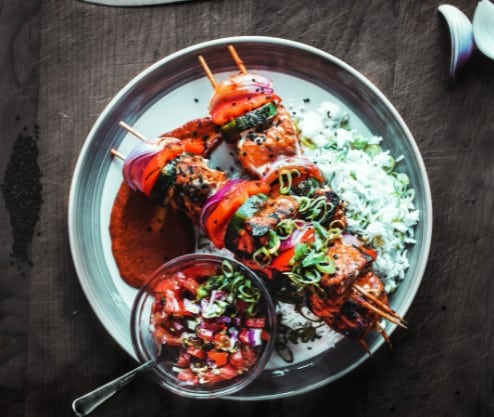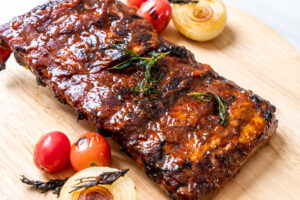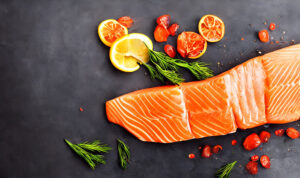
Order your next bottle of Scout & Cellar wine TODAY!
Wondering what wine is used for cooking? In the kitchen, leftover wine is a must-have. It gives meals a level of complexity that water or broth can’t. First and foremost, don’t cook with wine you wouldn’t drink with your meal, but your decision doesn’t have to be prohibitively expensive. After all, bad wine only gets worse in a pan, but Domaine de la Romanée-Conti isn’t always the best boeuf Bourguignon.
The majority of high-quality wines are suitable for cooking, but there are a few things to avoid. Sweet wine may be required in certain dishes, but it will not work in the vast majority of them. Cooking wine concentrates the sugars, giving reds a jammy texture and off-dry whites a syrupy, unbalanced flavor.
Oakiness can become harsh and uncomfortable during cooking, thus heavily oaked wines should be avoided. And wines with a lot of body might overpower a dish as it reduces in the pan. Acid, on the other hand, is your friend because it provides a refreshing counterpoint to the dish’s heavier ingredients.
THINGS TO CONSIDER WHEN CHOOSING A WINE
Choosing a wine to cook with isn’t as difficult as it appears. In general, you should use a wine that you would drink yourself when cooking. A bottle of wine that has been open for a few days, or even a generic bottle from the corner store, can be used to cook with. Spend a little extra time looking for a wine that you’d appreciate on its own if you’re going to drink the same wine with the meal.
In cooking, you rarely use more than a splash of wine, so keep that top-shelf, limited-release vintage for another time. The majority of what makes that expensive wine special will be lost in the cooking process. If you have the choice, go with a dry wine rather than a sweet one, as the residual sugars in the sweet wine will overpower the dish. Second, the type of wine you buy is really important.
The Best Wines To Pair With Jambalaya
RED WINES
If the lighter side of the meal is championed by dry white wines, the savory receives a lift from a variety of reds. Big, full-bodied reds like Zinfandel, shiraz, and syrah can have a lot of tannins, which can turn chalky when cooked. Reds from the Old World with modest tannins are a little more approachable. Pick one of these off the shelf if you’re in doubt:
Cabernet Sauvignon
It’s a great option for braising foods like ribs. While the meat cooks, the braising effect softens it and enhances the flavors of the other components. The braising liquid that is leftover might subsequently be utilized as a glaze. The lack of sugar in the cabernet prevents the wine from caramelizing over a hot pan during deglazing.
Merlot
A is a fruit-forward, smooth red wine with low tannins. This wine, like cabernet and pinot noir, pairs well with proteins. Merlot can be used to make a pan sauce or a reduction. This method is heating the red wine in a sauté pan with a few other seasoning ingredients over low heat until it simmers. This thickens the wine and brings out the intense flavors even more. When it’s done, you’ll have a thick sauce.
Pinot Noir
This is a lighter cultivar that pairs well with hearty stews. As the meat cooks, the mild wine will tenderize it and complement the fatty flavors. Because this procedure requires a couple of cups of wine, pinot noir is a good choice that isn’t too intense or overbearing.
WHITE WINES
There are three typical white wine varieties, but as with anything in cooking, improvise as best you can if you don’t have it. Higher residual sugar varieties, like Riesling or Gewürztraminer, aren’t recommended for cooking since the sugar can caramelize and make a savory food excessively sweet. Wines like Albarino or Chenin blanc, which have a similar dry taste to the ones listed below, work well.
Chardonnay
A traditional buttery, rich, and full-bodied wine that pairs well with a creamy chicken entrée or pasta sauce. Avoid using an oaky chardonnay because it will likely turn harsh during the cooking process; an unoaked chardonnay will suffice.
Pinot Grigio
Because of its dry, crisp, and straightforward quality, this is a common white used in cooking. By brightening a seasoned broth for steamed mussels or providing a nudge of complexity to shrimp and linguine draped in fresh herbs, it complements the more delicate quality of most seafood dishes.
Sauvignon Blanc
A fresh white wine with citrus and floral notes that can enhance a dish. This crisp white wine pairs well with a fresh, spicy marinade or sautéed fresh fish, but it’s also the perfect option for risotto. Sauvignon blanc’s acidic, juicy character is a fantastic match for the risotto’s deep creaminess, and incorporating it in the cooking process imbues the dish with a fine echo of that marriage.
RICE WINES
Rice wines come in two varieties: Chinese rice wine and Japanese rice wine. Because it must be distilled to obtain an ABV of 35 percent, the Chinese/Taiwanese type isn’t strictly a wine. To add acidity to stir-fries, Chinese rice wine is utilized. Mirin, a Japanese rice wine, is the other style. It was once used as a drinking aperitif, but it is currently solely commercially accessible. Mirin is a salty-sweet liquor with an ABV of 8-12 percent that’s ideal for glazes and Asian BBQ sauce.
SUBSTITUTES FOR WINE
If you can’t get some wine in time for dinner, it’s hardly the end of the world. Many replacements produce a similar result, albeit with less flare.
Juice
Red wine can be replaced with a rich, fruity beverage such as grape, cranberry, or pomegranate juice. White wine can be replaced with apple, white grape, or lemon juice.
Stock
Flavor and aroma will come from chicken, vegetable, or beef stock. For a white wine recipe, use chicken or vegetable stock, and for a red wine recipe, use any of the three stocks.
Vinegar
Depending on whether red or white wine vinegar is used, consider learning everything there is to know about different varieties of cooking vinegar.
Water
Use water if you’re unsure. Adding wine to a dish is largely a means to enhance nuanced flavor without affecting the volume of liquid in the dish. If you use water instead, make careful to season it as well to avoid diluting the dish’s final characteristics.
Summary: What Wine Is Used For Cooking?
In the kitchen, wine is a must-have. It gives meals a level of complexity that water or broth can’t. First and foremost, don’t cook with wine you wouldn’t drink with your meal, but your decision doesn’t have to be prohibitively expensive. After all, bad wine only gets worse in a pan, but Domaine de la Romanée-Conti isn’t always the best boeuf Bourguignon.
The majority of high-quality wines are suitable for cooking, but there are a few things to avoid. Sweet wine may be required in certain dishes, but it will not work in the vast majority of them. Cooking wine concentrates the sugars, giving reds a jammy texture and off-dry whites a syrupy, unbalanced flavor.
Oakiness can become harsh and uncomfortable during cooking, thus heavily oaked wines should be avoided. And wines with a lot of body might overpower a dish as it reduces in the pan. Acid, on the other hand, is your friend because it provides a refreshing counterpoint to the dish’s heavier ingredients.
If you have any questions about What Wine Is Used For Cooking? contact me today.





